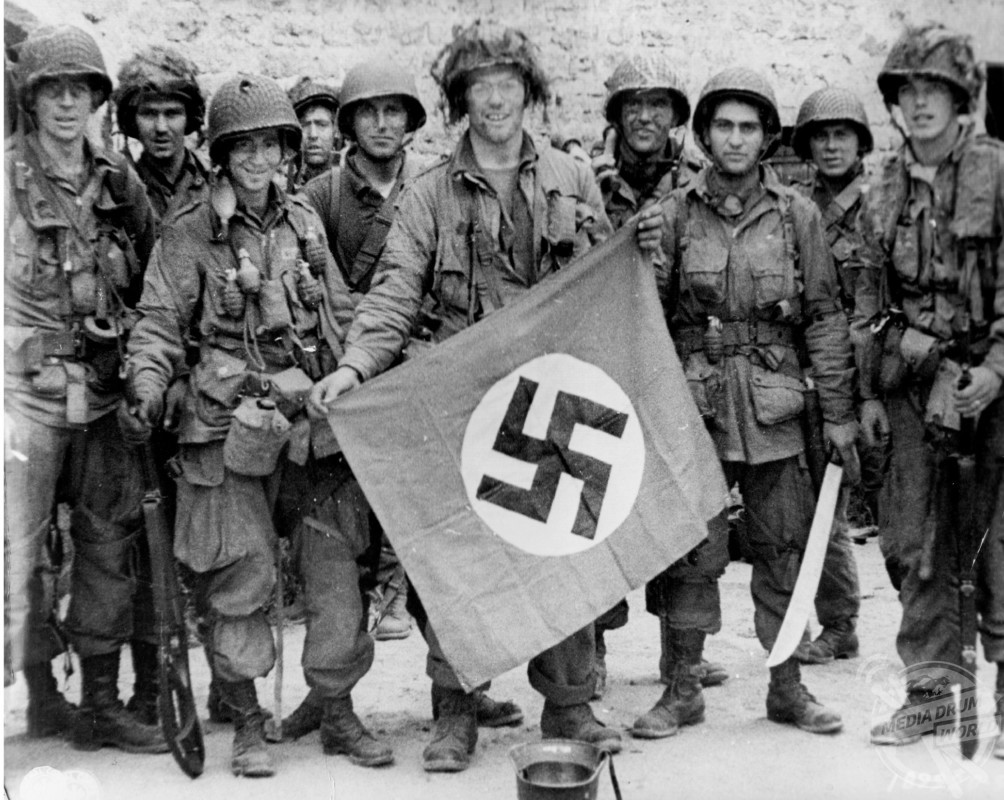
By Alex Jones
THE FULL horror facing soldiers in the D-Day landings has been laid bare in a harrowing new book.
Terrifying pictures of the Normandy landings include a haunting image of a corpse washed up against sea defences, a photo capturing the fear and trepidation in the eyes of a wounded soldier under fire, and the war-ravaged towns and communities that awaited brave allied forces after their initial assault.
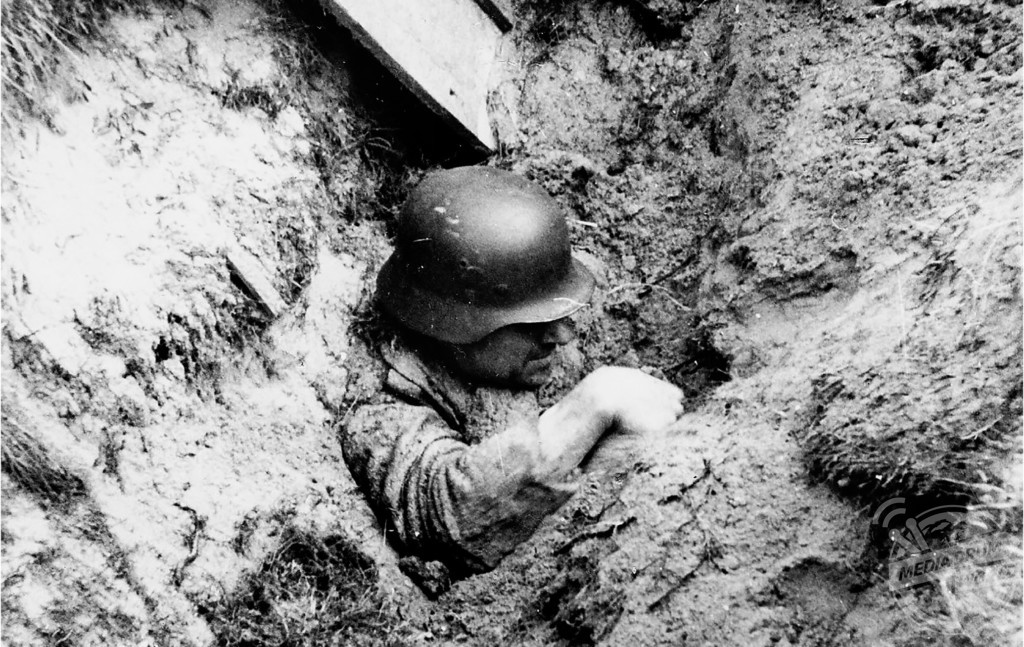
photographed by Dutro on the Cotentin on 9 June. Mediadrumimages / NARA
Other incredible images include a rare soldier’s perspective of the battle through a port hole, soldiers wading towards the shore under a hail of gunfire, and a soon-to-be German prisoner buried up to his chest in a collapsed trench.
Historian Brooke S. Blades’ new book ‘The Americans on D-Day and in Normandy: Rare Photographs from Wartime Archives’ offers an enthralling, chilling, and gruesome insight into what the American soldiers faced on the D-day landings of 6 June 1944, when tens of thousands of courageous allied soldiers faced the terrifying prospect of landing on France’s northern shoreline to liberate Europe.

“Omaha Beach and other Normandy locations are sacred places to many today,” writes Blades.
“The D-Day beaches were in large measure the primary gateways, the low doors in the Atlantic Wall that led, through heroism, suffering and sacrifice, to the liberation of Western Europe.
“To modern eyes, the landscapes associated with those events are memorialised and even sanitized to a point where the reality of those awful days in the summer of 1944 is increasingly hard to visualise.
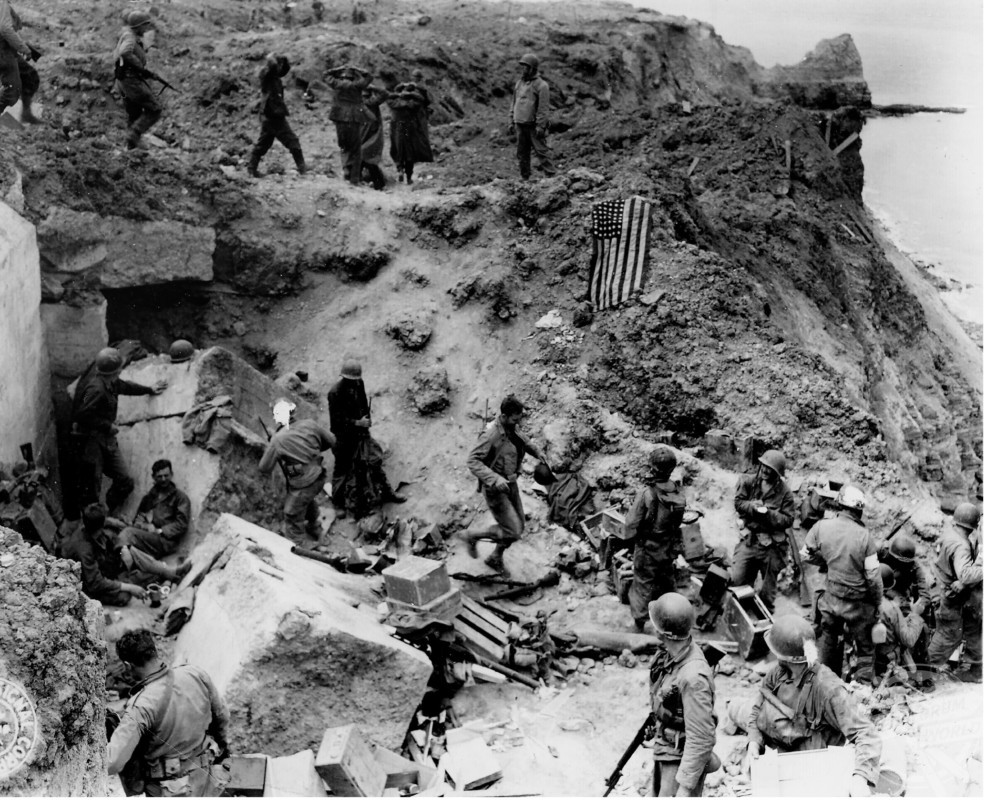
“Even more regrettably, the people who occupied those landscapes and experienced those days have largely faded in person and public memory.
“This volume proposes to revitalize both landscape and person, at least for the Americans who were there and the civilians they encountered.
“The intent is to reduce the immense scope of the invasion of France to a human scale that is both understandable and moving for the reader.”
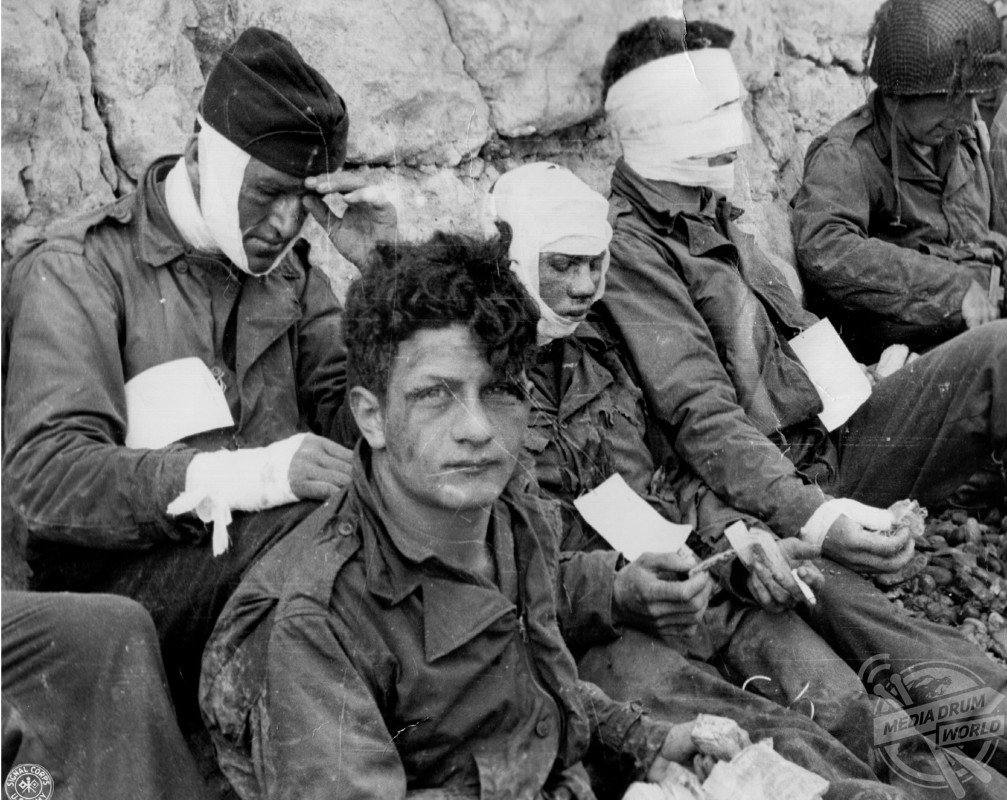
the comparative safety offered by the chalk cliff at their backs. Mediadrumimages / NARA
On D-day, over 132,000 ground troops and 18,000 paratroopers flooded to Normandy to take back north west Europe from the Nazi forces. Given the incredible scale of the invasion and the dangers, the allied forces suffered over 10,000 casualties who were wounded, killed or went missing.
The death toll estimates typically sit at around 2,500 but may be as much as double that figure. The number of German dead ranges anywhere between 4,000-9,000.
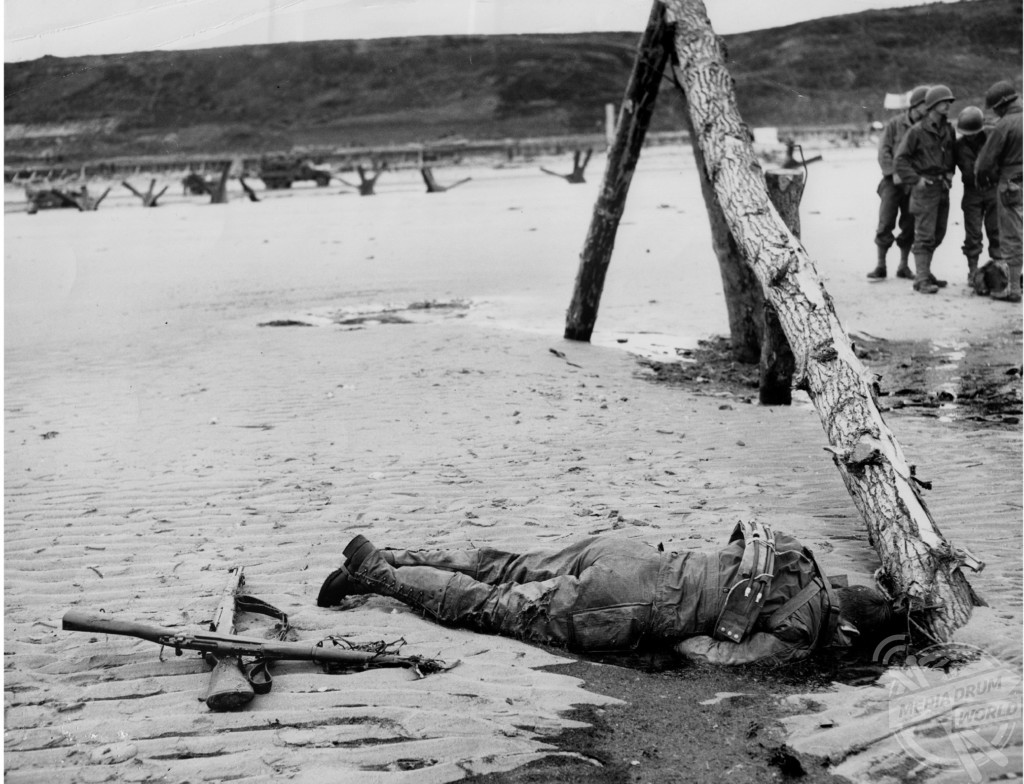
7 June. Mediadrumimages / NARA
Of the allied casualties, a huge portion of deaths was made up of American forces, especially after the United States succumbed to horrendous losses at Omaha Beach, one of the five assault beaches.
Blades was determined to use his collection of photographs to remind the free world of the sacrifices made by the allied troops during one of the bloodiest periods of the Second World War.
“This book is not dedicated to those photographers involved – richly deserving though they may be – but to their subjects and locations,” added Blades.
“Some of the images are reinterpreted or correctly identified as to location or subject for the first time.
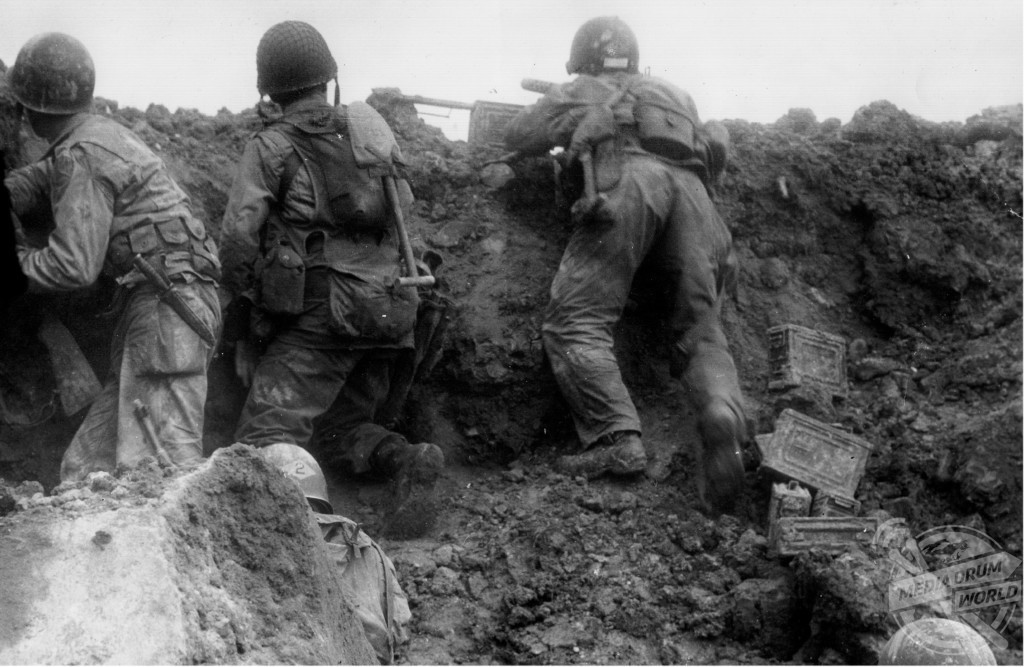
the Normandy invasion. Mediadrumimages / NARA
“However, it is hoped that the reader will come to regard this volume as more than a collection of photographs, since the intent is to view them as interpretive documents to enhance a broader understanding of the ‘soldiers, sailors and airmen’ and others in Normandy.”
In the weeks after the landings, including D-Day itself, the Battle of Normandy saw over 425,000 Allied and German troops killed, wounded or missing.
Brooke S. Blades’ new book ‘The Americans on D-Day and in Normandy: Rare Photographs from Wartime Archives’, is published by Pen and Sword Military and is available now.






